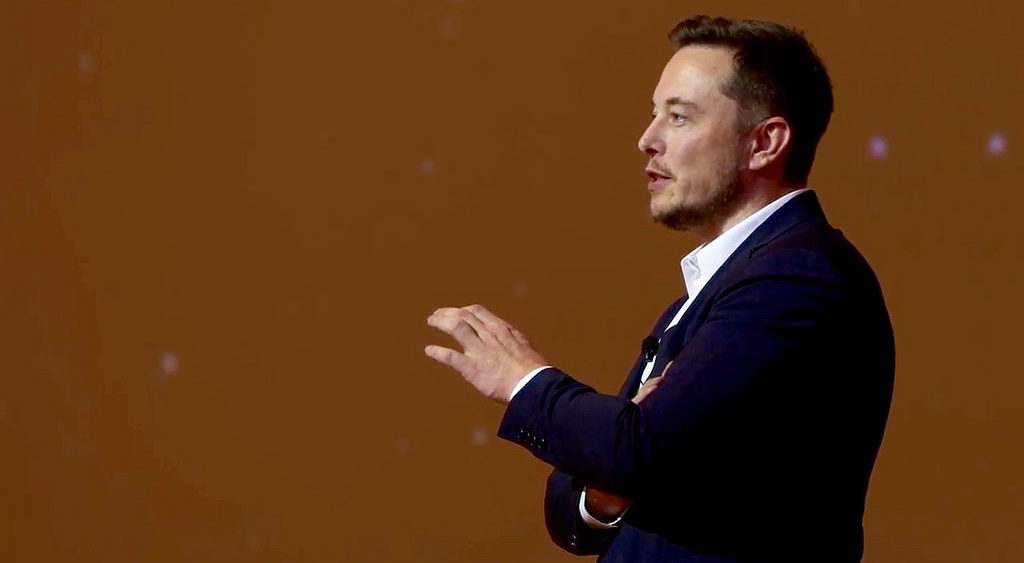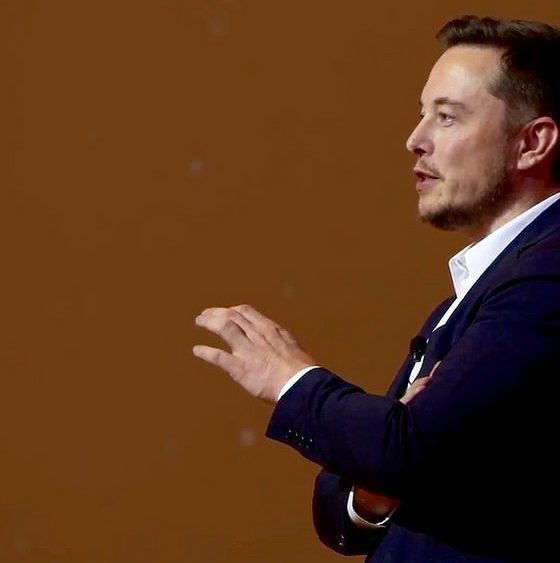

News
Tesla gets big legal wins as Musk finds himself at risk of libel over Thai caver controversy
Tesla’s legal troubles got a bit lighter this week, while Elon Musk seemingly gave himself yet another self-inflicted blow. Earlier his week, Tesla won a dismissal of a securities fraud lawsuit over the company’s progress in the production of the Model 3. The company also won a court case against the Ontario government over the state’s cancellation of EV rebates for Tesla customers.
The securities fraud lawsuit against Tesla alleged that the company and its executives knowingly knew that they could not meet their self-imposed goals of producing 5,000 Model 3 per week by the end of December 2017. The lawsuit’s plaintiffs argued that despite knowing these, Tesla still gave the impression that it was equipped to meet its production goals. This caused the stock to become volatile, resulting in losses for some shareholders.
In a decision that was made public on Monday, U.S. District Judge Charles Breyer noted that while it was true that the electric car and energy company was not able to meet its self-imposed production goals, “federal securities laws do not punish companies for failing to achieve their targets.” Tesla, for its part, noted that its difficulties in reaching its manufacturing targets for the Model 3 were caused by bottlenecks in its Nevada Gigafactory and its main factory in Fremont, CA.
“Plaintiffs are correct that defendants’ qualifications would not have been meaningful if defendants had known that it was impossible for Tesla to meet its stated production goals, not merely highly unlikely. The facts plaintiffs have put forth do not tend to establish that this was the case,” Judge Breyer wrote.
Tesla also won a case it filed against the Ontario government over the cancellation of EV rebates for Tesla’s electric cars. The revised EV rebate program was rolled out by the new Ontario government, and it singled out Tesla’s customers from qualifying for rebates of up to $10,640. In a ruling on Monday, Judge Frederick Myers of Ontario opted to strike down the transition program rolled out by the new government. A spokesperson for Tesla issued a statement to Reuters welcoming the Ontario judge’s ruling.
“Tesla only sought fair treatment for our customers, and we hope the Ministry now does the right thing by delivering on its promise to ensure all [electric vehicle]-owners receive their incentives,” the Tesla spokesperson said.
Unfortunately, this week also saw Elon Musk getting baited once more on Twitter over his previous comments about British cave explorer Vernon Unsworth, who was critical of Musk’s efforts to help a soccer team stranded in a flooded Thai cave system last July. After receiving requests online that he help in the Thai rescue efforts, Musk, together with SpaceX and Boring Co. engineers, developed a mini-submarine that the stranded children could use to escape the flooded cave system. Unsworth was dismissive of the mini-sub, stating that it would not work and suggesting that Musk “stick his submarine where it hurts.” In anger, Musk retorted, calling the caver a “pedo guy” on Twitter. Musk later deleted his tweet and apologized to Unsworth.
Just yesterday, Musk was on Twitter when he got baited into discussing Unsworth and his previous incendiary comments once more. At one point, Musk even noted that “You don’t think it’s strange he hasn’t sued me? He was offered free legal services.”
As it turns out, a libel lawsuit was indeed on the way. Unsworth is reportedly preparing to file a civil complaint for libel against Musk, according to a letter from the caver’s lawyer shared to CNBC. The attorney’s letter described Musk’s tweets as “false and defamatory.” The lawyer also urged Musk’s legal counsel to contact him to avoid litigation and correct the reportedly false statements. The letter was dated August 6, just a day before Musk posted his fateful “funding secured” tweet.
While Musk faces another possible lawsuit over his Twitter activity, Tesla continues to pursue its Model 3 ramp. The production of the electric car seems poised to hit record levels this quarter, with analyst Romit Shah of Nomura Instinet stating that Tesla could produce as many as 65,000-70,000 Model 3 this quarter. Baird analyst Ben Kallo is also optimistic about Tesla’s numbers this Q3, stating that the company’s fundamentals are “underappreciated” amidst the noise from the controversy resulting from Elon Musk’s go-private initiative.

News
Tesla FSD fleet is nearing 7 billion total miles, including 2.5 billion city miles
As can be seen on Tesla’s official FSD webpage, vehicles equipped with the system have now navigated over 6.99 billion miles.

Tesla’s Full Self-Driving (Supervised) fleet is closing in on almost 7 billion total miles driven, as per data posted by the company on its official FSD webpage.
These figures hint at the massive scale of data fueling Tesla’s rapid FSD improvements, which have been quite notable as of late.
FSD mileage milestones
As can be seen on Tesla’s official FSD webpage, vehicles equipped with the system have now navigated over 6.99 billion miles. Tesla owner and avid FSD tester Whole Mars Catalog also shared a screenshot indicating that from the nearly 7 billion miles traveled by the FSD fleet, more than 2.5 billion miles were driven inside cities.
City miles are particularly valuable for complex urban scenarios like unprotected turns, pedestrian interactions, and traffic lights. This is also the difference-maker for FSD, as only complex solutions, such as Waymo’s self-driving taxis, operate similarly on inner-city streets. And even then, incidents such as the San Francisco blackouts have proven challenging for sensor-rich vehicles like Waymos.
Tesla’s data edge
Tesla has a number of advantages in the autonomous vehicle sector, one of which is the size of its fleet and the number of vehicles training FSD on real-world roads. Tesla’s nearly 7 billion FSD miles then allow the company to roll out updates that make its vehicles behave like they are being driven by experienced drivers, even if they are operating on their own.
So notable are Tesla’s improvements to FSD that NVIDIA Director of Robotics Jim Fan, after experiencing FSD v14, noted that the system is the first AI that passes what he described as a “Physical Turing Test.”
“Despite knowing exactly how robot learning works, I still find it magical watching the steering wheel turn by itself. First it feels surreal, next it becomes routine. Then, like the smartphone, taking it away actively hurts. This is how humanity gets rewired and glued to god-like technologies,” Fan wrote in a post on X.
News
Tesla starts showing how FSD will change lives in Europe
Local officials tested the system on narrow country roads and were impressed by FSD’s smooth, human-like driving, with some calling the service a game-changer for everyday life in areas that are far from urban centers.

Tesla has launched Europe’s first public shuttle service using Full Self-Driving (Supervised) in the rural Eifelkreis Bitburg-Prüm region of Germany, demonstrating how the technology can restore independence and mobility for people who struggle with limited transport options.
Local officials tested the system on narrow country roads and were impressed by FSD’s smooth, human-like driving, with some calling the service a game-changer for everyday life in areas that are far from urban centers.
Officials see real impact on rural residents
Arzfeld Mayor Johannes Kuhl and District Administrator Andreas Kruppert personally tested the Tesla shuttle service. This allowed them to see just how well FSD navigated winding lanes and rural roads confidently. Kruppert said, “Autonomous driving sounds like science fiction to many, but we simply see here that it works totally well in rural regions too.” Kuhl, for his part, also noted that FSD “feels like a very experienced driver.”
The pilot complements the area’s “Citizen Bus” program, which provides on-demand rides for elderly residents who can no longer drive themselves. Tesla Europe shared a video of a demonstration of the service, highlighting how FSD gives people their freedom back, even in places where public transport is not as prevalent.
What the Ministry for Economic Affairs and Transport says
Rhineland-Palatinate’s Minister Daniela Schmitt supported the project, praising the collaboration that made this “first of its kind in Europe” possible. As per the ministry, the rural rollout for the service shows FSD’s potential beyond major cities, and it delivers tangible benefits like grocery runs, doctor visits, and social connections for isolated residents.
“Reliable and flexible mobility is especially vital in rural areas. With the launch of a shuttle service using self-driving vehicles (FSD supervised) by Tesla in the Eifelkreis Bitburg-Prüm, an innovative pilot project is now getting underway that complements local community bus services. It is the first project of its kind in Europe.
“The result is a real gain for rural mobility: greater accessibility, more flexibility and tangible benefits for everyday life. A strong signal for innovation, cooperation and future-oriented mobility beyond urban centers,” the ministry wrote in a LinkedIn post.
News
Tesla China quietly posts Robotaxi-related job listing
Tesla China is currently seeking a Low Voltage Electrical Engineer to work on circuit board design for the company’s autonomous vehicles.

Tesla has posted a new job listing in Shanghai explicitly tied to its Robotaxi program, fueling speculation that the company is preparing to launch its dedicated autonomous ride-hailing service in China.
As noted in the listing, Tesla China is currently seeking a Low Voltage Electrical Engineer to work on circuit board design for the company’s autonomous vehicles.
Robotaxi-specific role
The listing, which was shared on social media platform X by industry watcher @tslaming, suggested that Tesla China is looking to fill the role urgently. The job listing itself specifically mentions that the person hired for the role will be working on the Low Voltage Hardware team, which would design the circuit boards that would serve as the nervous system of the Robotaxi.
Key tasks for the role, as indicated in the job listing, include collaboration with PCB layout, firmware, mechanical, program management, and validation teams, among other responsibilities. The role is based in Shanghai.
China Robotaxi launch
China represents a massive potential market for robotaxis, with its dense urban centers and supportive policies in select cities. Tesla has limited permission to roll out FSD in the country, though despite this, its vehicles have been hailed as among the best in the market when it comes to autonomous features. So far, at least, it appears that China supports Tesla’s FSD and Robotaxi rollout.
This was hinted at in November, when Tesla brought the Cybercab to the 8th China International Import Expo (CIIE) in Shanghai, marking the first time that the autonomous two-seater was brought to the Asia-Pacific region. The vehicle, despite not having a release date in China, received a significant amount of interest among the event’s attendees.








